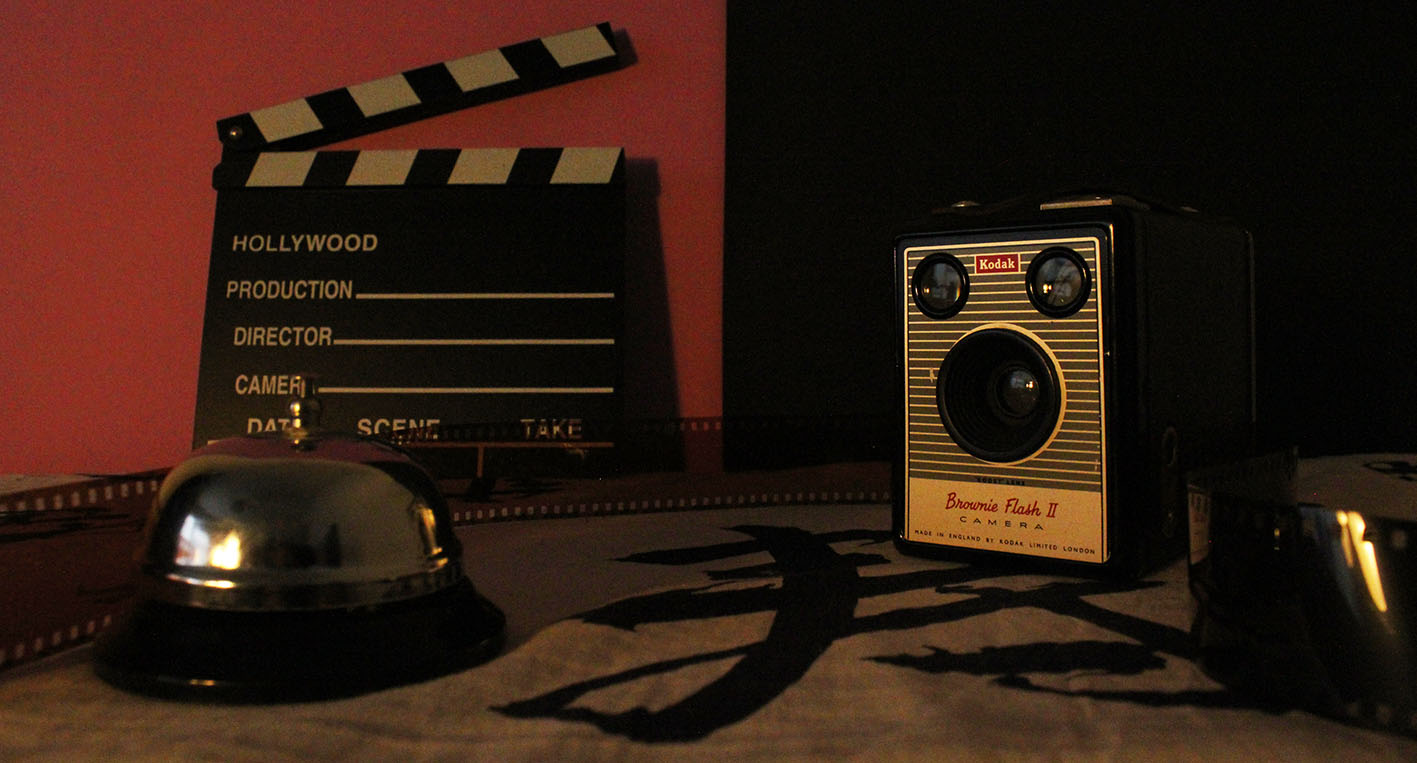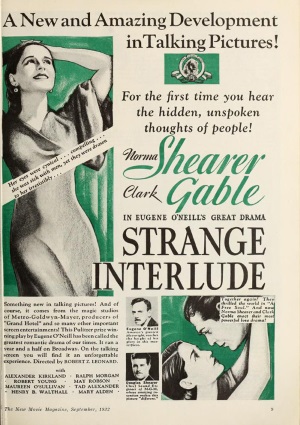The Original Peep Show
Strange Interlude is a movie for the patient viewer. I had difficulty getting through it on first viewing but due to my amour of Clark Gable and a soft spot for old mental illness melodramas with stories of bad blood and insanity passed through genes (scientific validity?) plus that creaky charm you get from pre-code films, on rewatching I did find new appreciation for Strange Interlude. The original 1928 play by Eugene O’Neil was a staggering 6 hours long; the film condenses that to below two hours whether for better or worse. – I struggle myself to imagine watching a 6-hour version of this story.
The plot of Strange Interlude requires a bit of setting up but after Nina (Norma Shearer) marries the naive Sam (Alexander Kirkland) then the ball gets rolling and the tension escalates when she is told by Sam’s mother (May Robson) that mental illness runs in her family and father’s a child with Dr. Ned Darrell (Clark Gable) without her husband’s knowledge. Also thrown into what makes a love square plot is the nihilistic, miserable excuse for a human being in the form of Charlie (Ralph Morgan). It’s some quality melodrama full of classic hallmarks including a house by the sea with crashing waves, a pleasing New England aesthetic and some fine fashions by Adrian. One area where the production does go wrong is with the overdone aging makeup on the four main cast members, turning them geriatric in 10 years – At least Gable’s drawn on mustache looks legit.
Granted I am a Gable die hard but I will passionately argue why the man is underrated as an actor. The role of Dr. Ned Darrell is one of his finest acting achievements; in particular when he interacts with his biological, spoiled brat of a child who doesn’t know he is his real father. Norma Shearer likewise shows shades of a Garbo-esque drama queen, verging on over the top without crossing into laughable territory.
The unique selling point of Strange Interlude is the voice-overs in which the viewer can hear the character’s thoughts in an attempt to replicate the original play’s use of soliloquy – a technique in which characters speak their inner thoughts to the audience. This experiment is clearly a product of filmmakers trying to adapt to the early days of sound and the opening title explains the technique to the audience and even the first line delivered in this manner alludes to it (“Queer things, thoughts, our true selves, spoken words are just a mask, to disguise them”). It is necessary, however? – I can’t say is. The body language of the actors and the cinematic form allow for this sort of information to be conveyed to the audience which Strange Interlude does anyway any many cases. None the less it doesn’t ruin the film by means and is at least a commendable experiment.

